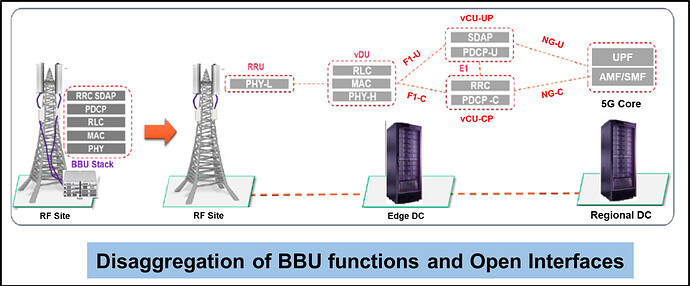-
My friend: Hi Ibrahim, I have a question for you.
- Me: Please, go ahead.
-
My friend: I was wondering if Open RAN can be used in brown-field networks or is it only for green-field networks?
- Me: Open RAN can be used for both green-field and brown-field networks. For green-field networks, we already witnessed successful deployments such as DISH in US, Rakuten in Japan, and many other trials at many MNOs around the world. For brown-field networks, Open RAN can be used as well, but there are some challenges that we need to consider before going to deployment.
-
My friend: But what are the challenges for deploying Open RAN in brown-field networks?
- Me: There are many challenges such as the TCO (Total Cost of Ownership) as there is an implicit assumption in the telecom world that deploying Open RAN will reduce the cost, both CAPEX and OPEX, of the operators as they have the freedom to choose hardware and software from a wider vendor supply chain, but this cost saving will depend on the deployment model which the operator will select as if the operator decides to use v-DUs at the Edge DC (data centers), then establishing these Edge DCs will cost money at the beginning of the deployment, also how the operator will operate the Open RAN network, as if this will be done by the operator’s employees, then cost can be saved, while cost can increase if the operator decided to use a specific SI (System Integrator) to do that. Also, the level of automation in the network will determine how much cost can be saved as if we have zero-touch and E2E automation in the RAN network, this will reduce the operational complexity leading to cost savings.
-
My friend: So, are there any other challenges?
- Me: Yes. Performance is a big challenge as operators will require that the Open RAN performance to be at least the same as legacy RAN networks if even not better, but this requires that Open RAN features to be mature and on the same level as current legacy RAN vendors such as mMIMO, Beamforming, DSS, load balancing, etc., while this will take time to be achieved, but this gap will reduce over time. Also, the introduction of AI/ML in x/r-APPs hosted on RIC with SMO orchestration adds intelligence to the network which will enhance the KPIs and customer experience. Also, interoperability can be a challenge as having the main components (CU, DU, RU) disaggregated and the option to choose from any supplier means that interoperability validation and verification may need to be repeated with every introduction of new hardware. And if we have multi-vendor with Open RAN, that means more operational complexity which is another challenge. Also, new security challenges will be introduced with Open RAN.
-
My friend: Thank you so much. You made it very clear.
- Me: You are most welcome.
